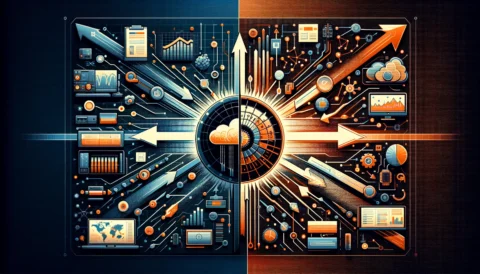Contents
Billing is the process of recovering dues from customers and business partners against goods and services. It is a routine business activity where invoices or bills are dispatched for customers to pay their dues.
Traditionally, companies maintain a manual inventory and payment system to record transactions and sales in paper-form ledgers. But paperwork is complex, time-consuming, costly, and prone to human errors.
Even simple tasks and calculations require excessive attentiveness and time investment with manual labor. Thus some sort of automation is necessary to cut down processing time and ensure accuracy. That is where technology-based billing systems, software applications, and digital platforms surface.

Modern business-to-business (b2b) billing software applications simplify payment processes and provide results within minutes. Now companies can bypass unnecessary record keeping and cut down hours of manual calculations with automation in payment processing.
Companies can exchange goods and services for millions without fearing theft or fraud. An automatic payment feature helps minimize cost, errors, manual work, and increases productivity, and ensures transaction security. It is also possible to categorize bills and payments by specific characteristics like customer identifications or the type of services they use. These features simplify record keeping and help trace and recover dues.
With that in mind, the following paragraphs further explore why b2b companies must modernize their billing systems.
1. Minimize expenditure
Billing is a costly business activity. It involves and engages several employees to cross-check and maintain payments, receipts, and invoices. But companies can reduce administrative and processing costs by going paperless through modern b2b billing software applications and platforms.
Modern electronic billing methods are cheaper than traditional payment systems. Since everything is digital, there is no need for paper checks. Intermediary steps like printing, stamping, mailing, or recordkeeping become reductant with electronic billing. Companies can make online transactions or approve payments with a few clicks on their devices without hassles.
Customers have all the information needed to make transactions and process payments in real-time. E-invoices also offer a presentable display and simplify the assessment of bills and invoices. Thus paperless billing is faster, more accurate, and easy to manage.
2. Speed up payment processing
Companies have business relationships with several stakeholders, and every partnership involves financial give and take one or the other way. So employees maintain multiple separate accounts and ledgers to keep track of every deal and transaction.
But it is not easy to process business deals from different partners in parallel. Employees can sometimes mix data from one invoice to another or miss out on crucial information while multitasking. But companies can bypass tedious intermediary processes by upgrading their billing systems.
Automated payment systems also shorten processing time and improve cash flow. For instance, e-billing systems are faster and simple to operate. Therefore, companies can develop, categorize, trace, and resolve payment issues without extensive labor. As a result, they have more capital for necessary activities and operations right on the go.
3. Reduce unnecessary workload
Engaging workers in mundane calculations unnecessarily consumes resources when technology has better solutions. Account verification and registration of information in ledgers are not high-level activities. Such indulgence is only a waste of employees’ precious time. Yet, productivity and efficiency are not comparable to their effort.
Their focus and accuracy decline when they overstrain themselves during limited duty hours. Thus companies should explore and implement efficient tools and systems to facilitate workers. Introducing automation in billing systems can cut down processing time and reduce workload.
Employees don’t need to keep a mental track of every invoice, transaction, and account detail. Companies can find worthy tasks for their employees rather than keeping them busy with trivial and unnecessary bookkeeping.
4. Securing transactions
Traditional paper-based billing methods are not only tedious but less secure. Companies cannot protect their paper form invoices and ledgers with passwords. Even if online threats cannot access financial resources, they can destroy records and incur losses. But modern digital billing alternatives prevent such mishaps.
The integrated feature of e-payment helps business partners to exchange invoices and receipts electronically. Companies can further secure their business deals and transactions with cyber security control measures like encryption techniques, multilayer authorization, and password protection.
In addition, modern billing systems offer easy traceability of transactions. Executives, administrators, investors, and customers can view, monitor, and trace pending bills and invoices via real-time updates. So it is easy to detect fraud if users provide wrong information or falter during access authentication and validation checks.
5. Better financial planning and management
Better financial planning and management is the top priority of every commercial entity. If your profits lag behind expenditures, your business cannot function and flourish in the long run. Thus companies take financial management very seriously. Yet, ups and downs are frequent. No matter how much they endeavor to keep their ledgers balanced, inconsistencies are unavoidable.
Tracing and detecting problematic areas is even more difficult with traditional billing systems. It requires a lot of effort to check approaching deadlines for each customer and monitor pending dues. But modern b2b billing software applications can show the entire flow of finances.
Companies can trace delays, pending dues, bottlenecks, and defaulters. In addition, the finance team can import and export records in real-time to analyze, foresee, and streamline cash flows. Real-time insights into the financial situation also help organizations to make plans and strategies for better customer response and utilization of their financial resources.
6. Multiple modes for payments
Everyone doesn’t need to be comfortable with transactions via banks. Many experience trouble in currency conversion procedures. Some might not even possess credit or master cards to pay global vendors. And these formalities are a headache if customers have strict deadlines for payment processing.
Customers can withdraw their purchase orders if their preferred payment mode is inaccessible. But modem billing systems offer the facility of multiple payment modes, including credit card, master card, debit card, pay pal, electronic wallets, mobile transfers, and cash.
Hence, customers can utilize whichever transaction mode is easy for them. In addition, the facility of multiple payment modes is also a strategic move for organizations. It helps speed up cash flows, minimizes transaction delays, gets paid faster, and maintains account ledgers.
Companies can tap into international markets, engage more customers, satisfy business partners, and boost revenues. So it is a win-win situation for companies, customers, and other stakeholders.
Conclusion
Smooth cash flow is necessary to ensure seamless business operations, but traditional billing systems are a big no-no today. This is why organizations must modify and simplify their processes with better and more sophisticated alternatives.
Conventional paper-based payment and billing systems do not offer any incentive today except increase expenditure. Hence, the modernization of billing systems is inevitable if companies aim for long-term operational life and the success of their businesses.



